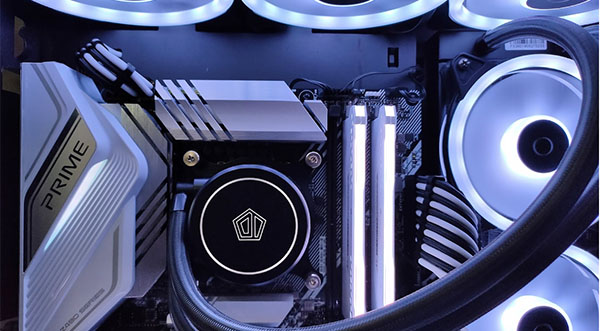Your Complete Guide to Choosing a New Computer (Key Components Explained)
By Space Coast Daily // September 29, 2023

Embarking on the journey to choose a new computer can seem like an uphill climb, especially with the plethora of options available.
Understanding key components is vital to making an informed decision that matches your needs and budget.
This guide aims to shed light on these critical elements, leading you step by step through CPUs, RAM, hard drives and SSDs, graphics cards, and motherboards, and acting as a roadmap towards purchasing your perfect computer.
Unmasking Motherboards
The motherboard is essentially the backbone of your computer. Comparable to a city’s layout, it hosts all key components like the CPU, RAM and graphics cards in its various slots and ports.
Besides ensuring component compatibility, consider factors such as potential for future upgrades, and built-in utilities such as Wi-Fi or Bluetooth connectivity. Also consider whether these features will link in nicely with your other tech, such as a Wi-Fi booster you might have at home.
It can be tempting to focus attention on more conspicuous components, but understanding what makes a good motherboard allows you to make discerning choices that maximize performance without wasting resources. Your new machine will thank you.
Understanding CPUs and Their Role
Central Processing Units (CPUs) are often considered the brain of your computer, as they make everything tick.
Having CPU cores and threads explained to you before choosing is sensible, as these factors significantly influence performance levels. It’s crucial not just to look at speed, but also how many tasks can be undertaken simultaneously, which is determined by the counts of cores and threads.
Exploring RAM
Random Access Memory, or RAM, is an indispensable player in the makeup of a computer, and determines how many applications and tasks your PC can manage simultaneously without slowing down.
Simply put, the larger the pool of RAM you have available, the more work you can accommodate without the entire machine’s performance taking a nosedive.
From photo editing to multi-tasking apps, knowing enough about how much RAM fits your activities best ensures a seamless computing experience. Light web browsing and video streaming isn’t especially RAM-intensive, but for things like gaming you’ll need more on tap.
Hard Drives & SSDs Explained
Your computer’s storage, whether composed of hard drives or Solid State Drives (SSDs), is where all your files and software live.
Traditional hard drives offer ample space at lower costs, but SSDs provide faster data access speeds, and so are better for tasks requiring quick response times.
Choosing between them is often about balancing budget with performance demands. For instance, whilst gaming might benefit from an SSD’s speed, storing photos or music files may not necessitate this leap in technology.
Most mid to high-end modern PCs come with SSDs, and can include a mechanical hard drive for secondary storage purposes, giving you the best of both worlds, so keep this in mind in your search. For more detailed guidance and product recommendations, you can visit boosthardware.com.
Deciphering Graphics Cards
Graphic cards are essential for gamers who demand high-definition 3D graphics, video editors needing color accuracy, and even regular users wanting smooth streaming or video calls.
Integrated cards are cost-effective yet offer limited performance, while dedicated cards beef up visual prowess at a higher price point.
Selecting a suitable graphics card boils down to identifying what you primarily use your PC for, and this is true of all the components we’ve talked about.
The Bottom Line
The thing that’s worth reiterating once more is that you have to work out what you need your computer for in order to make the right choice when the time to buy arrives. It’s also necessary to have a firm budget in mind, as this will help you narrow down the vast array of products in this niche to make the decision more manageable.











